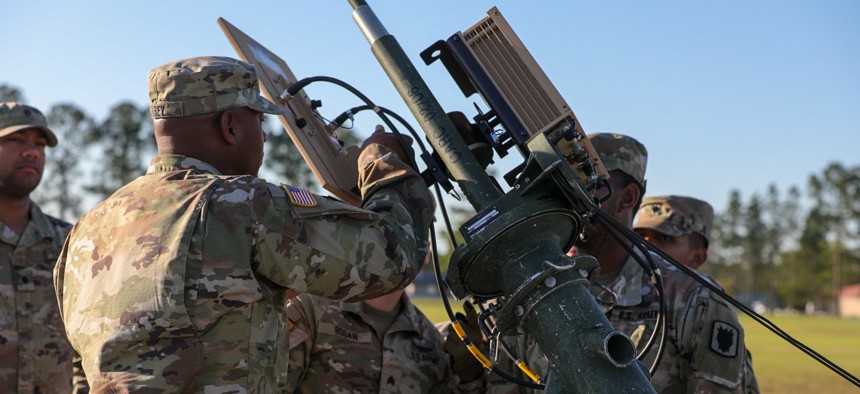PATRICK TUCKER

The U.S. Army, working with a startup called Rydberg Technologies, has achieved the world's first long-range radio communication with an atomic quantum receiver, a breakthrough that could greatly help new jam- or hacker-proof communications, the company announced Thursday.
What is a quantum sensor? A receiver or antenna that is far more sensitive to very small changes in electromagnetic fields than a typical one, and that uses very little energy. How are they so sensitive? As Rydberg Technologies CEO Dave Anderson explains in this 2018 paper, the key is Rydberg atoms, which are cesium atoms with very excited electrons, giving them a high quantum number, reflective of a large distance between the electronics and the nucleus. That distance gives the atoms a very acute response to subtle changes in electromagnetic fields. That response, in turn, can be harnessed for the detection of radio waves beyond what can be achieved with a regular antenna.
Such a sensor could be used for many purposes, such as to detect a wider variety of wavelengths than a conventional antenna, and would be less sensitive to electromagnetic disruption.
That’s a key military concern, as the Pentagon looks to a future facing adversaries with extremely effective electromagnetic warfare capabilities. A quantum sensor could enable troops to detect otherwise hard to find drones or soldiers carrying high-tech communication equipment, even equipment that is encrypted—though it won’t decrypt the communication itself. It could also help troops find new pockets within the spectrum to communicate between drones, jets, ships, satellites, and soldiers even in the midst of heavy electromagnetic interference.
The demo took place during the Army's recent NetModX field experiment. It was the first demonstration of the technology in long-range signal transmissions, Anderson told Defense One in an email.
“While we cannot divulge details of the results from the demo, the ARx [atomic antenna receiver] has achieved [radio frequency] signal reception and radio communication at a distance of over 1 kilometer in our tests. This is neither a practical nor a fundamental limit,” Anderson added.
“There is work to be done to further miniaturize and ruggedize these systems for broad deployment. Next steps for the research and experimenting include push on fundamental capabilities of the atoms and the light. We are still far from fundamental quantum limits,” he said.
No comments:
Post a Comment